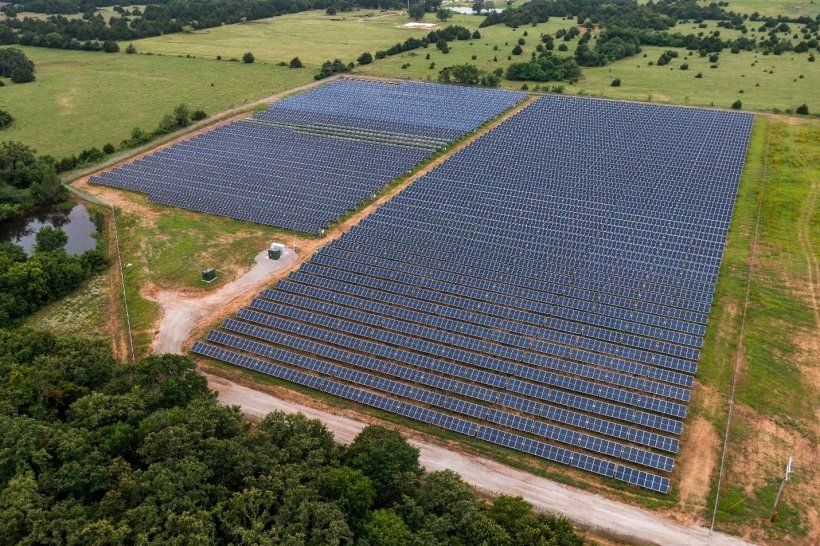It’s possible to build community support for solar energy by getting a little exposure. This is a lesson that the Oklahoma Electric Cooperative learned recently. OEC is a U.S. Department of Energy’s National Community Solar Partnership member. In 2015, the U.S. Department of Energy invited the central Oklahoma electric utility to take part in a pilot solar initiative that built a plant near a heavily-trafficked interstate.
In Oklahoma, extreme weather events such as frequent lightning storms and tornadoes have seen an increase in interest in resilient energy sources. The 2021′ Big Freeze’ also affected the state, which left millions without power. This highlighted concerns about how energy is generated and distributed. This new, visible solar array was a big draw.
“I began getting a lot more calls about the site, especially from teachers,” says Nick Shumaker, OEC’s head engineering and manager of its renewable energy portfolio. It felt like they were starving to see renewables.
Nick began giving tours of the site to teachers and students. He also created an hour-long presentation on energy transmission and how renewables fit into the picture. Finally, he partnered with OEC’s community involvement team to create more materials to tell this story.
The program was a hit. Nick and his colleagues wondered if the solar educational site could be built intentionally. This question was posed to several teachers who had visited the site. He was directed to Norman Public Schools, a Norman customer of OEC.
It turned out that the school district was also having similar conversations. The community also reviewed its budget after teachers went on strike earlier in the year. Nearly 80% of the annual budget was spent on building maintenance and energy costs, which makes them prime candidates for cost-cutting strategies. Although the district was open to adding solar to its properties, it was discouraged by the high up-front costs and complicated regulations regarding distributed solar. The community contacted Nick and realized that a partnership with OEC could produce revenue for the school, provide educational opportunities for students, and help develop a community-based solar model. This was a win-win situation.
Nick and the OEC team collaborated closely with Norman Public Schools to develop a 2-megawatt, solar-powered project. It went online in December 2020. OEC assumed the planning and financial risks of the project, but OEC guaranteed the revenue through a 30-year lease. OEC was able to generate energy during the February 2021 ‘Big Freeze’ storm, which helped OEC maintain low energy prices.
OEC and teachers now leverage community interest to discuss how they can set up future community-based solar projects and create more educational resources for students. This includes exploring a partnership between Oklahoma University and a local technical college of students in constructing these projects.
Nick is often asked, “Why wouldn’t we do that?” OEC is currently looking at several models for solar community projects. These include a traditional model in which subscribers get bill credits and a model in which project revenue funds student scholarships. Nick is sure that there will always be a lot of subscribers.
The Norman Public Schools’ solar installation was made possible by the National Rural Electric Cooperative Association (NRECA) ‘s Achieving Cooperative Community Equitable Solar Resources (ACCESS), funded by the U.S. Department of Energy’s Solar Energy Technologies Office. The Norman Public Schools’ solar installation was the first to be granted technical assistance under the ACCESS initiative. Since 2021, the NRECA has been a member in good standing of the NCSP.








